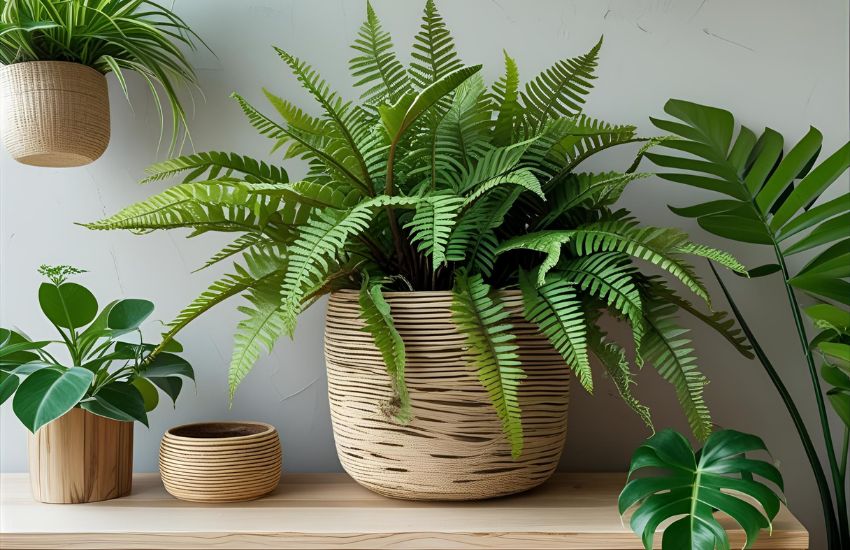Looking for a way to keep your Bird’s nest fern healthy, green, and thriving indoors? This unique houseplant, known for its lush rosette of arching fronds, brings natural beauty and soft texture to any modern space. Often labeled Asplenium nidus, the nest fern is a tropical epiphyte that loves high humidity, indirect light, and consistently moist conditions—mimicking the forest canopy it naturally grows in.
The Bird’s Nest Fern plant thrives in indirect sunlight, warm humid conditions, and consistently moist but well-drained soil. Native to tropical regions, this houseplant prefers a central location away from drafts. Avoid watering the center of the plant and feed monthly with a balanced fertilizer. It’s a lush, low-maintenance favorite among indoor plant experts.
In this post, you’ll discover modern care strategies for your nest fern, including how to maintain ideal humidity levels, when and how to use the right fertilizer, and how to identify and address common problems. Let’s dive into what makes this beloved Asplenium a favorite among houseplant experts.
Creating the Ideal Humidity and Light Balance for Your Bird’s Nest Fern

Striking the right balance of humidity and light is essential to keeping your bird’s nest fern healthy, especially when growing it indoors. This stunning indoor plant, known for its wavy, bright green fronds and compact bird’s nest shape, is both beautiful and easy to care for—once you understand its natural preferences. Like many epiphytic plants, the bird’s nest fern (Asplenium nidus or antiquum) thrives in warm, shaded environments with consistent moisture and airflow.
Mimic the Fern’s Natural Environment Indoors
In its tropical natural environment, the bird’s nest fern grows beneath the rainforest canopy, where it enjoys soft, dappled light and high humidity. To replicate this setting indoors, place your plant where it will receive bright but indirect light—such as near an east-facing window. Avoid direct sunlight, which can scorch the fern’s fronds and cause the vibrant green color to fade. If you notice your bird’s nest looking dull or bleached, it may be a sign of too much sun.
Maintain High Humidity Levels
Humidity is crucial for the bird’s nest fern’s lush appearance and overall well-being. In dry indoor climates, especially during winter, you can use a humidifier or set the pot on a tray filled with water and pebbles to increase ambient moisture. Another tip is to group it with other humidity-loving plants. Always ensure the top inch of soil stays moist but not soggy—overwatering can lead to rot at the base of the plant.
Light and Humidity Work Together
To truly keep your bird’s nest fern thriving, remember that light and humidity are interconnected. Too little light can slow growth, while dry air may crisp the edges of the fern’s fronds. Use a well-draining potting mix designed for tropical foliage to support healthy roots and retain just the right amount of moisture.
Conclusion
Caring for a bird’s nest fern indoors requires attention to detail, but the reward is a vibrant, textured plant that brings elegance and calm to your space. Since this nest fern is an epiphyte native to tropical regions like Madagascar, Thailand, and Indonesia, it naturally grows in the trunks of trees where it collects water and humus in the center of the plant. Mimicking this environment indoors is key.
Always provide bright indirect light or full shade, never direct light, to avoid brown tips or fronds that turn yellow. Avoid watering directly into the center to prevent crown rot, and use a well-draining soil mix that includes moss or sphagnum. Keep the soil moist, not soggy, and mist the plant to maintain the humid conditions it prefers. Watch for spider mites or other pests, and avoid over-fertilizing—opt for a half strength fertilizer only during the growing season.
If you notice common problems like wilting, discoloration, or a failing root system, consider the impact of lighting, watering, and drainage. To propagate, keep an eye out for sori on the underside of mature fronds, though propagation by spore is slow.
With the right balance of care, your bird’s nest fern will thrive—whether grown outdoors in suitable USDA hardiness zones or as a beloved indoor plant.
Frequently Asked Questions (Modern Indoor Care Tips for the Bird’s Nest Fern Plant Houseplant Experts Love )
Why do houseplant experts recommend the Bird’s Nest Fern for modern homes?
Houseplant experts recommend the Bird’s Nest Fern because of its stunning tropical fronds, easy indoor care, and ability to purify the air. It adapts well to different indoor spaces, thrives in indirect light, and adds a fresh, modern aesthetic to homes and offices.
What lighting conditions are best for Bird’s Nest Fern care indoors?
The Bird’s Nest Fern grows best in medium to bright indirect light. Avoid direct sunlight, which can burn its fronds. North- or east-facing windows are perfect, and if natural light is limited, you can use LED grow lights for healthy growth.
How often should I water my Bird’s Nest Fern houseplant?
Water your Bird’s Nest Fern when the top inch of soil feels slightly dry. Keep the soil consistently moist but never soggy. Always water around the edges of the pot, not in the plant’s center “nest,” to prevent crown rot.
What are the ideal indoor conditions for keeping a Bird’s Nest Fern healthy?
For best results, provide high humidity, warm temperatures between 18–27°C (65–80°F), and well-draining soil. Bathrooms, kitchens, or rooms with a humidifier are ideal spots. Avoid cold drafts and dry air to maintain lush, green fronds.
